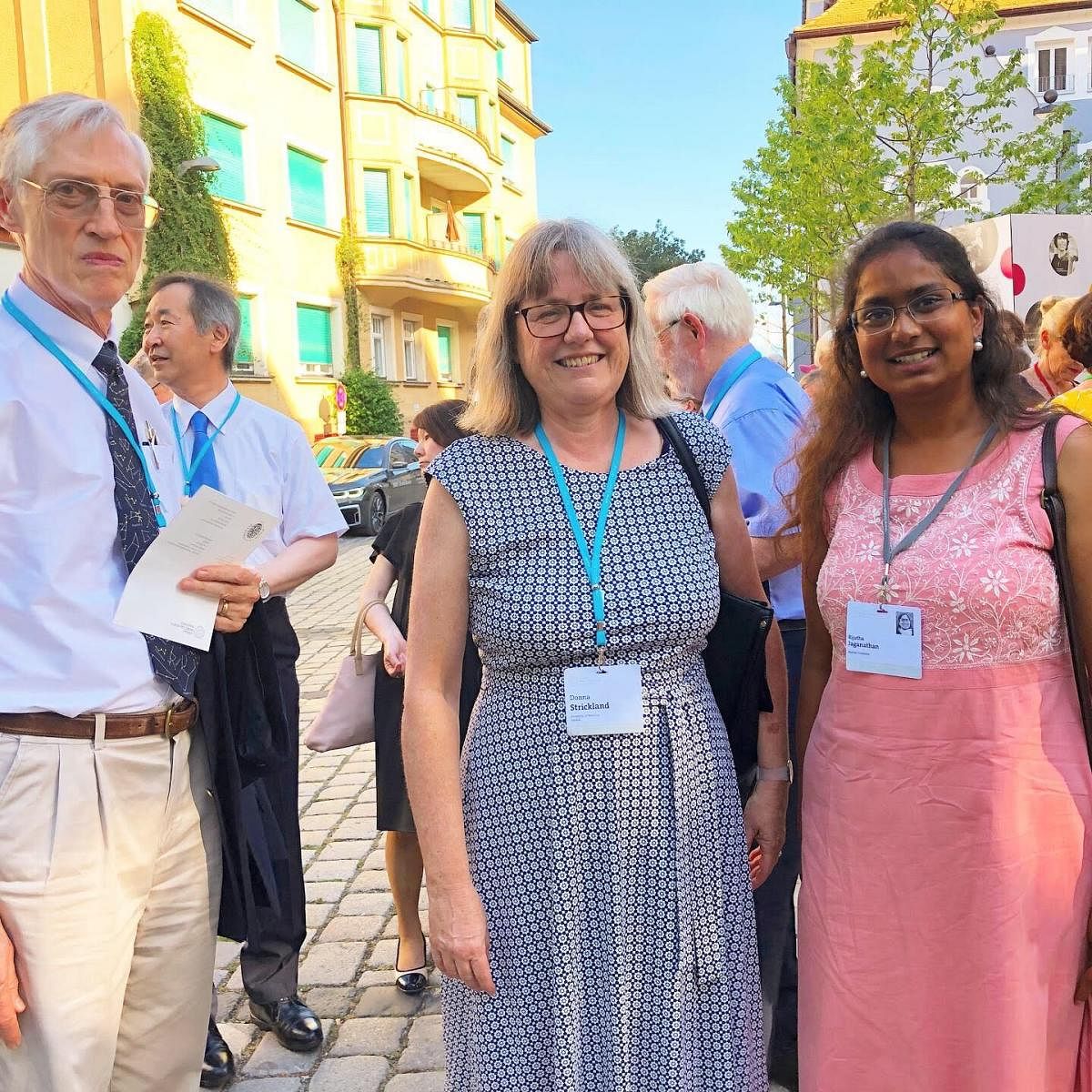

Attending the Lindau Nobel Meet was reliving a dream I saw six years back when a senior and Lindau Alumni told me about the meet. I was one among the 580 young scientists from around the world selected to take part in the 69th Lindau Nobel Laureates Meet with a chance to interact with 40 Nobel laureates. The charming island in the middle of Lake Constance has hosted Nobel Laureates and young scientists since 1951.
Dedicated to physics
This year’s meet, dedicated to physics, took place between June 30 and July 5. The key topics were cosmology, laser physics and gravitational waves, inspired by the winners of the Nobel Prize in Physics 2018, two of whom — Gerard Mourou and Donna Strickland, were present.
The meet started with an opening ceremony and the keynote speech was given by 2011 physics laureate Brian P Schmidt. Climate change, the threat to democracy from populists, open science, and unconscious bias (both gender and race-based) were some of the topics he spoke about.
There were various kinds of programmes in the week-long meet. Each day started with lectures by the laureates and the topics ranged from their Nobel Prize-winning work to their current research and general topics like the new SI system of units.
There were also informal sessions which were more interactive like Agora Talks and open discussions. Selected groups of young scientists also got to have lunch with a laureate or walk around the island and have more personal interactions. Panel discussions, master classes where the young scientists present their work to a Nobel laureate and get feedback from peers and the laureate formed a large part of the event.
After lunch on Day 2 was a session called ‘open discussion’ where young scientists were allowed to interact with a Nobel laureate who gave a lecture earlier in the day. I attended the session with Donna Strickland. She answered questions ranging from her PhD to the day she got the call from Stockholm. I asked her what is the most important quality of an experimental physicist and she said “patience”.
Discussion over lunch
Along with nine others, I got the chance to have lunch with Claude Cohen-Tannoudji, Nobel laureate in Physics 1997, on Day 3. Though a man of few words, he spoke about the important role of teachers and how his high school teachers motivated and inspired him.
After that, I attended the open discussion session with Rainer Weiss and was bewitched by his enthusiasm. The day ended with an informal Grill & Chill session on the park by the lake. Carl Weiman and his wife joined our table and we discussed his passion for pedagogy.
On Day 4, there was a panel discussion about career planning for young scientists and 2001 physics laureate Wolfgang Ketterle said that he can only share anecdotes and that the path each scientist takes is different. The stories of all Nobel laureates were full of lucky accidents, being at the right time at the right place and accepting failures.
I got to share a table with 2018 physics laureate Gérard Mourou and his wife Marcelle Mourou on Day 5. The evening was spent discussing lasers, climate change and their son’s chocolate factory.
On the last day, a 2-hour boat ride took us to the enchanting island of Mainau which is covered with flower beds, gardens, greenhouses and a butterfly house. There was an interview with 2011 Nobel Peace Prize winner Tawakkol Karman who started the Arab Spring.
It was followed with a panel discussion “How can science change the world for the better?” The discussion made us realise that science can’t change the world but scientific thinking can.
The Lindau experience will be cherished for a lifetime. True to the meeting motto, I was educated, inspired and motivated.
The European Commission is also a partner and since I am a Marie Curie Fellow as part of an EU ITN, they supported my application. For young scientists studying and working in India, the Department of Science and Technology selects about 20 candidates after a nation-wide call for application. Recordings of all lectures are available on https://www.mediatheque.lindau-nobel.org/meetings/2019.